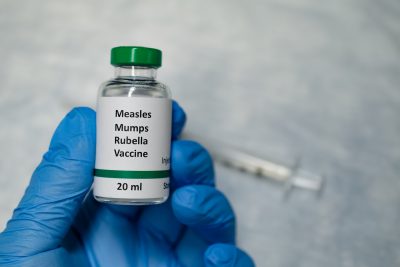Rainy springs and hot summers in our beloved St. Louis bring a variety of annoying insects. Particularly, during these months I face my mortal enemy, the MOSQUITO. There are times I dread going outdoors because of these tiny, flying, biting insects. I just can’t take the itch that ensues after their attack on my skin!
Unfortunately, my eldest child is just as magnetic to these annoying insects as I am. Meanwhile, my daughter and her dad could be standing right next to my son and never feel the flutter of these critters against their skin. In my experience, you’re either loved or ignored by these finicky insects. I’d rather be ignored!
The bottom line is: whether the mosquitos choose you out of a crowd of 100 to feast on or fly right by you without a pause, everyone should know how to avoid mosquito bites and how to treat those itchy bites if you do fall victim.
Step 1: Avoidance
Don’t set yourself up to be a mosquito’s feast. Here are several tips for how to deal with mosquito bites simply by avoiding mosquitos in the first place.
- Avoid stagnant, small pools of water, garbage cans, and uncovered sweet foods
- Avoid being outside at dawn and dusk
- Cover up! If you must be outside during peak mosquito times (dawn and dusk) or in a mosquito area, wear long sleeve shirts and pants.
- Use mosquito netting over baby carriers and strollers when your baby could be exposed
- Don’t use scented perfumes, soaps or lotions
- Eliminate sources of standing water in your yard, such as empty flower pots, trashcans, kiddie pools, and birdbaths
- Have your yard sprayed. For those of us who cannot walk to the car this time of year without being bitten several times, having your yard treated from April to October is a must. There are several companies that provide this service and it could significantly decrease the likelihood of you getting bitten in your own yard. Step into the neighbor’s yard and that’s another story…
Step 2: Protection
Mosquitos can transmit a variety of viral illnesses of varying severity, including ZIKA and West Nile Virus. So, the issue with the bites is not just the annoying itch! Children should be protected from mosquito bites when exposure is likely.
The Centers for Disease Control (CDC) and American Academy of Pediatrics recommend insect repellents that are EPA registered and contain DEET, Picaridin or Oil of Lemon Eucalyptus (OLE). These are all available in the U.S. and have been well studied, both in regards to side effects and effectiveness. These repellants are safe when used properly.
You should always follow the label’s instructions for application. Studies by the Environmental Protection Agency (EPA) have shown no risk to human health, non-target species or the environment with proper use on the skin or clothes. These “top guns” work by making it harder for these insects to smell us, so they don’t bite us!
So what doesn’t work? Wristbands soaked in chemical repellants, garlic or Vitamin B taken by mouth, devices that give off sound waves, and bug zappers. Also, essential oils from sandalwood, rosemary, citronella, and soybean may have a very limited, short term effect under some circumstances. Citronella candles are not very helpful because the repellent agent is not as effective and does not get dispersed from the candle well. Dispersal devices (i.e. Allethrin) create a limited “zone of protection,” and can be helpful within a zone such as a campground. The effect will only last while the machine is running and dispersing the repellant agent.
Let’s dig a little deeper into these “top gun” repellents!
| Facts | Risks | Pros | Cons | Age | Effectiveness | |
| DEET | Longest history of use, registered in 1957 with the EPA
Synthetic chemical |
No risk to human health, non-target species or the environment
Uncommon eye or skin irritation |
Very effective
Over 500 products in the US Gold standard repellent |
Can damage plastics
Odor Greasy |
Over 2 months | Max recommended is 30%
Children 10-30% DEET 2-10 hours, depending on percent DEET Mosquitos, ticks and some flies |
| Picaridin | Synthetic version of repellent found in pepper plant
Available in the US since 2005 |
Studies show no risk to human health, non-target species or the environment
Uncommon eye or skin irritation |
Greatest range of insects repelled
Odorless |
Over 2 months | Equivalent to DEET for mosquito protection
Mosquitos, ticks, flies, and chiggers |
|
| OLE | Newest approved by CDC/EPA
Plant-based: lemon eucalyptus tree Repel or Cutter |
Eye irritant | Strong odor
Few available EPA-registered products. |
Over 3 years | Duration 2-3 hours with at least 30% OLE — some studies show 2-6 hours depending on conditions
Mosquitos and some ticks Equivalent to about 10-15% DEET or Picaridin |
Do’s and Don’ts of repellent use
- Do:
- Use just enough repellant to cover clothing and exposed skin
- Spray in open areas to avoid breathing in
- Apply to your hands and rub onto the skin of younger children
- Follow the label’s directions for proper application
- Don’t:
- Spray into the face
- Spray on cuts or scrapes
- Use combined sunscreen-DEET as this results in overexposure to DEET because the product needs to be reapplied frequently for sunscreen effectiveness
Step 3: Care for Mosquito Bites
Most children and adults develop a small bump when bitten by a mosquito. The “bump” appears after a mosquito uses its needle-like-mouth to pierce the skin, suck out a blood meal and then inject some of its saliva into the skin. The proteins in the saliva trigger a mild immune system reaction that shows up as a small, itchy red bump. This bump can be very itchy but not painful and usually resolves in a few days. Swelling is the greatest within the first 24 hours and should begin to decrease after this.
Bites generally fall into two categories:
The first is the “easy itchy little bite”- most children and adults have reactions in this category
- Cut nails short to discourage scratching the bite. Scratching can break the skin and allow bacteria in, causing an infection. Tell your child scratching will make the bite itch MORE, not less
- Apply calamine lotion or hydrocortisone (0.5-1%) cream to the bite to relieve the itch
- Cool compresses and ice packs can also relieve the itch and decrease any swelling
- Call your doctor if you experience fever, increasing redness or swelling after 24 hours or any other concerns
The second is the “over reactor” – AKA GIANT ITCHY WELT!
- Some children develop very large, red, itchy, swollen areas anytime a mosquito bites them. This is called “skeeter syndrome,” and happens because of an allergic response to proteins in the mosquito’s saliva.
- “Over reactors,” which includes me, feel like the itchy GIANT welt is never going to go away. I often feel like I’m itching for a week or more! But there is relief for us too!
First, I try to never get bitten, if there is a way to prevent it! I avoid dusk and dawn, all standing water, spray my yard and always use DEET repellant. But, they still find me when I’m unprepared- such as walking to get my mail!
Baking soda paste is my savior when I get bit. Applying a paste of baking soda and water to the bite right away reduces, and often prevents the large welt from occurring. This paste is also helpful later on for decreasing the swelling and relieving the itch
Antihistamines like Zyrtec or Benadryl. Ask your doctor for the correct dose.
Have a fun and bug-free summer!






Comments